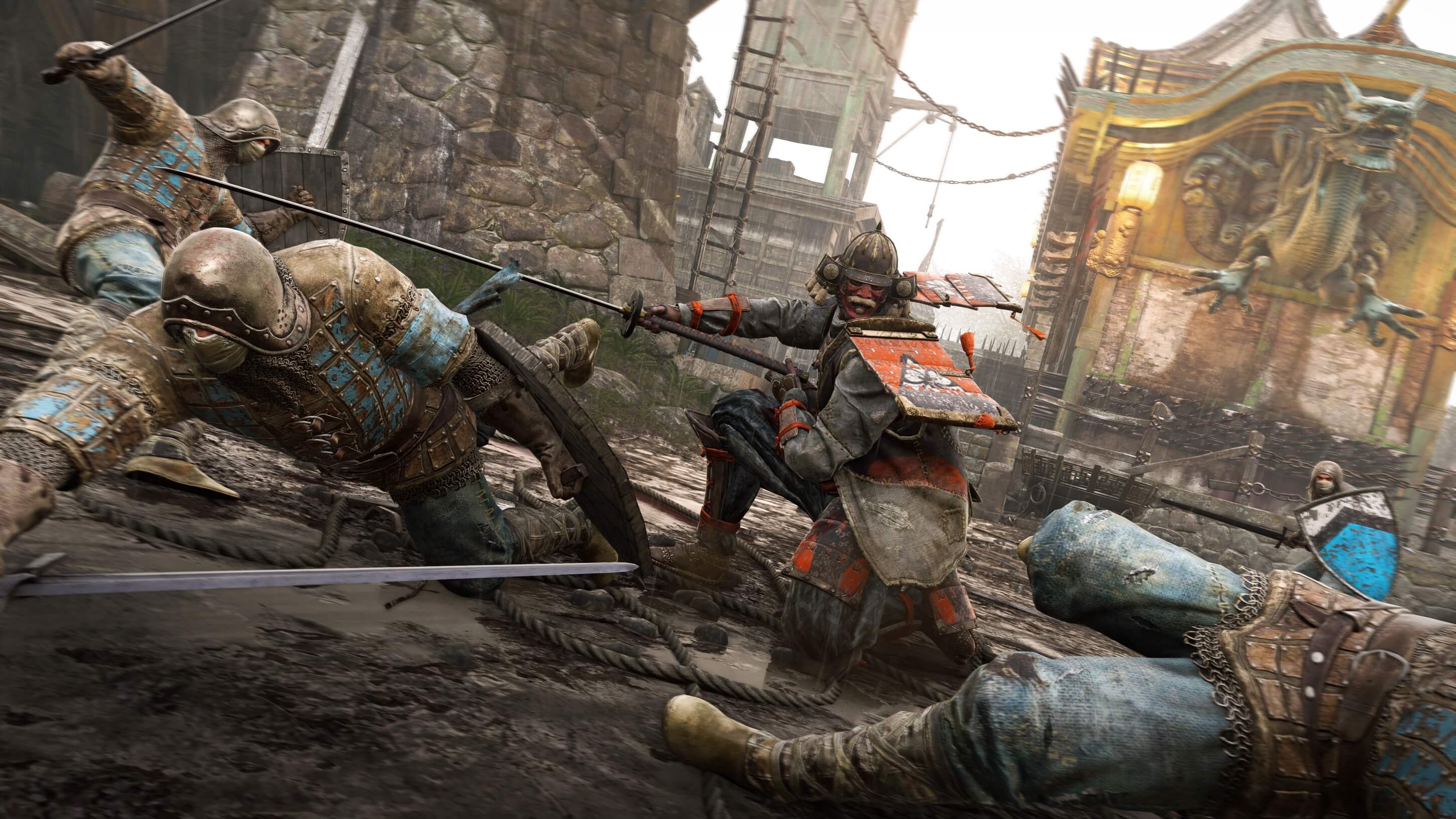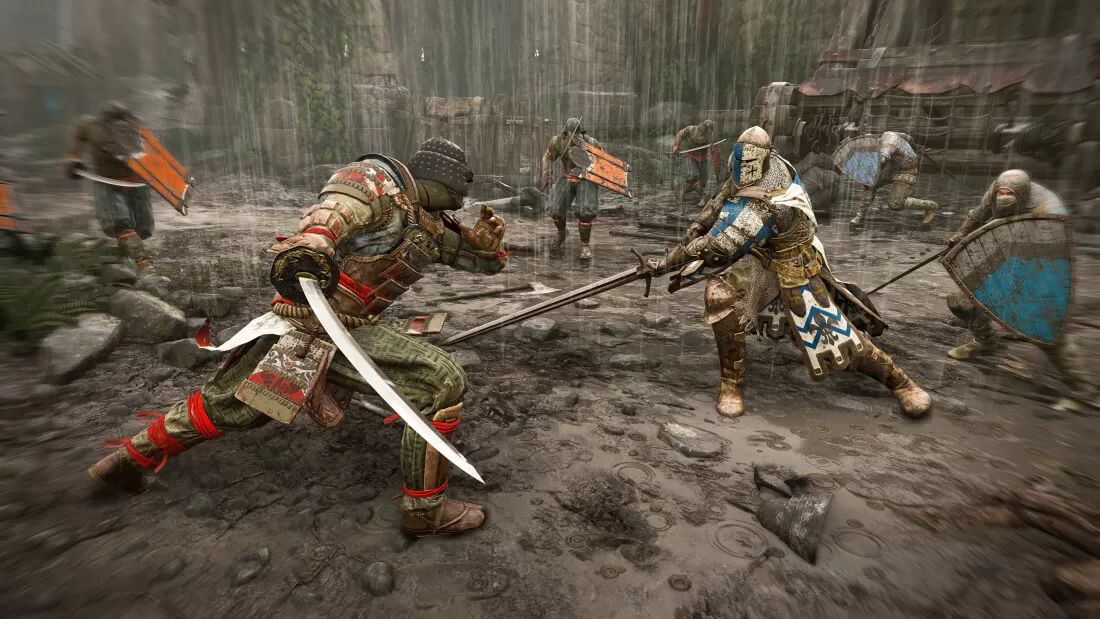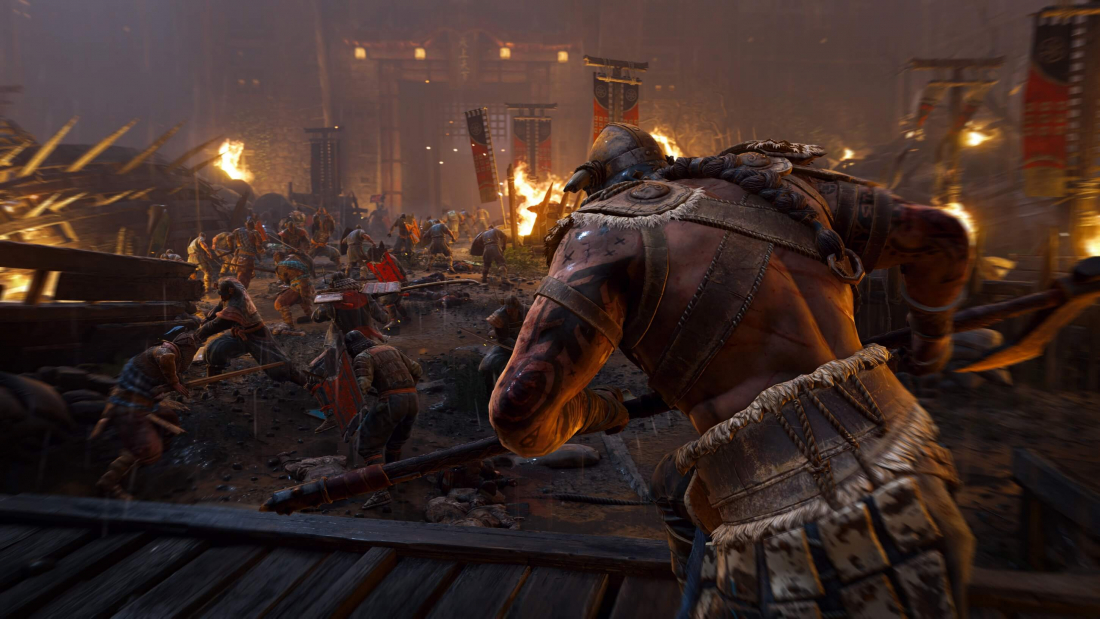Released this week on PC, PS4 and Xbox One, Ubisoft's new action fighting game "For Honor" puts you in control of medieval-styled knights, vikings and samurai, each of which has four classes that can be played through the single player campaign as well as five online modes. We will of course be looking at the PC version and as usual won't be focusing too much on the gameplay, but instead seeing what sort of hardware it takes to power this new triple-A title.
Built upon the same AnvilNext 2.0 engine as 2014's Assassin's Creed Unity, 2015's Rainbow Six Siege, Assassin's Creed Syndicate, and the recent open beta of Ghost Recon Wildlands, this engine has been taken advantage of by some impressive titles over the last few years and should be fairly optimized.
However, gamers have been concerned about how the title might run on PC, knowing that Ubisoft's track record has been spotty at best. The beta performance of Ghost Recon Wildlands was less than desirable for instance, while Watch Dogs 2 brought most gaming rigs to their knees.
Thankfully, the good news is that For Honor actually seems well optimized and there are a heap of tweakable settings on the PC version as well as a useful built-in benchmark tool.
The game's display menu lets you enable or disable vsync, change the resolution and aspect ratio as well as the display mode and even monitor. Meanwhile, the graphics menu provides four presets which have been labelled low, medium, high and extreme. For testing, I used the extreme preset to see what it takes to run this game in all of its glory.
Extreme puts settings like texture filtering to 16x, enables TAA anti-aliasing, motion blur, dynamic reflections and MHBAO ambient occlusion, as well as maxing out the geometric detail, texture quality, dynamic shadows and environment detail.
For those of you wondering, Ubisoft recommends gamers use a CPU that is equal to or greater than the Core i5-2500K or AMD FX-6350, along with 8GB of system memory and a GeForce GTX 680 or Radeon R9 280X. Those aren't exactly steep requirements so I'm keen to see how the game runs on the latest and previous generation GPUs.
I should note that this is an Nvidia-sponsored title and Nvidia has GameReady drivers available. AMD has also managed to sneak out an early support driver that is said to boost RX 480 performance by 4-5%.
Testing Methodology
We benchmarked For Honor using our Core i7-7700K test machine which sees the processor running at 4.9GHz with 32GB of DDR4-3000 memory. The performance numbers you are about to see are based on the built-in benchmark which I found to do a pretty good job of mimicking in-game performance, at least as far as the GPU is concerned.
I did find that the processor was taxed much more heavily when actually playing the game and that being the case the CPU numbers are based on actual game play during what I found to be a particularly CPU-demanding scene.
Since the game seems well optimized, we didn't find it necessary to test many quality presets and instead focused on including every graphics card we had on hand. We tested three standard resolutions: 1080p, 1440p and 4K.
The latest AMD and Nvidia graphics drivers were used for testing and it should be said that both camps have been actively working to improve support for their competing GPUs in For Honor. AMD's Crimson 17.2.1 ReLive improves support and performance, while Nvidia has been doing much the same and it's worth noting that the company's 378.66 release is its second game-ready driver.
Test System Specs
- Intel Core i7-7700K (4.90GHz)
- Corsair Vengeance LED DDR4-3000 32GB
- Asrock Z270 Taichi (Intel Z270)
- Corsair RMx Series RM750x 750-watt
- Samsung SSD 850 Pro 2TB
- Microsoft Windows 10 Pro 64-bit
- Nvidia GeForce 378.66 WHQL
- AMD Crimson 17.2.1 ReLive
- Radeon RX 480 (8192MB)
- Radeon RX 470 (4096MB)
- Radeon RX 460 (4096MB)
- Radeon R9 Fury X (4096MB)
- Radeon R9 Fury (4096MB)
- Radeon R9 Nano (4096MB)
- Radeon R9 390X (8192MB)
- Radeon R9 390 (8192MB)
- Radeon R9 380X (4096MB)
- Radeon R9 380 (2048MB)
- Radeon R7 360 (2048MB)
- Radeon R9 290X (4096MB)
- Radeon R9 290 (4096MB)
- Radeon R9 285 (2048MB)
- Radeon R9 280X (3072MB)
- Radeon R9 280 (3072MB)
- Radeon R9 270X (2048MB)
- Radeon R9 270 (2048MB)
- Radeon HD 7970 GHz (3072MB)
- Radeon HD 7970 (3072MB)
- Radeon HD 7950 Boost (3072MB)
- Radeon HD 7950 (3072MB)
- Radeon HD 7870 (2048MB)
- Nvidia Titan X (12288MB)
- GeForce GTX 1080 (8192MB)
- GeForce GTX 1070 (8192MB)
- GeForce GTX 1060 (6144MB)
- GeForce GTX 1060 (3072MB)
- GeForce GTX 1050 (2048MB)
- GeForce GTX 1050 Ti (4096MB)
- GeForce GTX Titan (6144MB)
- GeForce GTX 980 Ti (6144MB)
- GeForce GTX 980 (4096MB)
- GeForce GTX 970 (4096MB)
- GeForce GTX 960 (2048MB)
- GeForce GTX 950 (2048MB)
- GeForce GTX 780 Ti (3072MB)
- GeForce GTX 780 (3072MB)
- GeForce GTX 770 (2048MB)
- GeForce GTX 760 (2048MB)
- GeForce GTX 750 Ti (2048MB)
- GeForce GTX 680 (2048MB)
- GeForce GTX 660 Ti (2048MB)
Benchmarks: 1080p Performance

For those of you targeting 60fps at 1080p, the RX 470 or GTX 1060 3GB will be required. That said, aging weaponry such as the GTX 780 Ti and R9 290X provided strong performance here, pushing well over 60fps on average.
In fact, using the extreme quality preset we find that For Honor is surprisingly GPU-friendly at 1080p. For a 50fps average, dated cards such as the Radeon HD 7950 Boost and GeForce GTX 680 hold up well.


